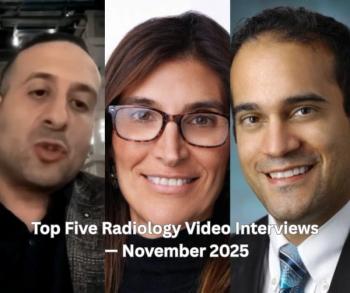
Imagers explore PET/CT for lung cancer diagnosis
Challenges remain for PET/CT in diagnosing lung cancer. Key among them is bolstering detection without increasing false positives. But in several studies presented at the 2005 RSNA meeting, researchers explored the quantitative data derived by the hybrid technique, and their findings could move PET/CT closer to practical use for this application.
Challenges remain for PET/CT in diagnosing lung cancer. Key among them is bolstering detection without increasing false positives. But in several studies presented at the 2005 RSNA meeting, researchers explored the quantitative data derived by the hybrid technique, and their findings could move PET/CT closer to practical use for this application.
In prior work, researchers at the University of Texas Southwestern Medical Center noted the difficulty in differentiating benign granulomas from malignant neoplasms using hybrid imaging. Benign granulomas tend to calcify and do not accumulate glucose. Malignant lesions behave the opposite way. Yet about 15% of benign lesions fail to follow this pattern, producing false positives on PET studies.
As a result, UTSMC researchers are developing new ways to visualize these lesions.
"We've spent a lot of time trying to work up a proper method for evaluating the Hounsfield unit density and the standard uptake values," said Dr. William Erdman, a professor of radiology at the university and chief of nuclear medicine at UT's Parkland Hospital in Dallas.
Erdman and colleagues retrospectively reviewed 53 patients with confirmed benign and malignant lesions. They used a 3D workstation to draw a region of interest around a suspected lesion and analyzed specific voxels within a volume showing FDG activity. After identifying air, calcium, and other elements, they measured only HU density and SUV from true tissue. They found that this technique increased PET/CT's sensitivity and specificity for characterization.
"PET/CT allows better localization and shorter imaging times," Erdman said.
A similar technique was used by Dr. Kiyoshi Nishikawa from the Miyazaki and Tsukuba universities in Japan. Nishikawa's team measured average HU density and SUV in the region of interest around pulmonary lesions from 93 patients. They found PET/CT's quantitative assessment could spot malignancies, even when these lesions were missed or misinterpreted by the PET component.
Drs. Qiang Li and Yongkang Nie from the University of Chicago developed a computer-aided detection system based on a PET/CT imaging database. The system relies on an "enhancement" filter, which highlights tumors while suppressing normal anatomic structures. The investigators achieved a high detection rate for true malignancies.
Newsletter
Stay at the forefront of radiology with the Diagnostic Imaging newsletter, delivering the latest news, clinical insights, and imaging advancements for today’s radiologists.



























